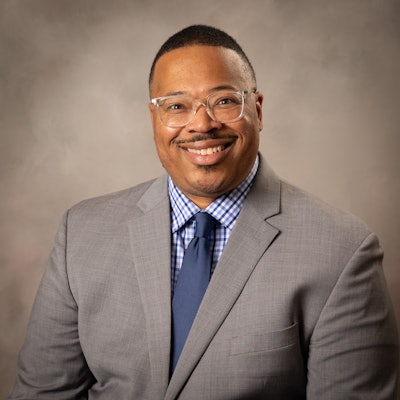Networking events with alumni give students the chance to learn more about life after graduation and build career skills.
A May 2024 Student Voice survey by Inside Higher Ed and Generation Lab found that 29 percent of respondents believe their college or university should prioritize connecting students to alumni or other potential mentors. However, not every student has this opportunity before graduating; only one-third of graduates said their institution helped them to network with alumni while they were students, according to a 2024 National Alumni Career Mobility survey.
Administrators don’t always recognize this disconnect between current and former students; a 2024 survey of student success leaders found that 56 percent believe their career center effectively connects students with the institution’s alumni network.
Inside Higher Ed compiled six ways colleges and universities can invite alumni to partner with them to enhance students’ career development.
- Mentorship Programming
Pairing students with graduates, particularly those in the same discipline or with similar career goals, is a common way to foster feelings of belonging among classes and with the institution.
Survey Says
A 2025 survey from Gravyty found that 80 percent of alumni engagement teams invite alumni to participate in community or networking events, but just over one-quarter ask alumni to become active volunteers. A survey of alumni also by Gravyty found that alumni who have served as mentors say they are 200 percent more likely to donate in the future.
The University of Massachusetts Dartmouth hosts a Meet and Mentor mixer to introduce current and past students, building organic relationships in an informal setting. Syracuse University extends mentorship opportunities for alumni far from campus through virtual mentorship meetings. The university has coordinated over 1,000 meetings between students and alumni mentors over the past five years.
In some cases, alumni can provide insights into evolving industries in ways that career services pros may be less equipped to.
Worcester Polytechnic Institute created a mentorship program for students interested in green or sustainable jobs and industries, in part to help them keep up with the rapid changes in the field. The program has found more mentors than mentees so far, including alumni from a variety of industries such as architecture and design, waste reduction, consulting, and energy.
- Office Hours Programs
Establishing an informal space for students to meet with alumni allows them to create connections and helps students build confidence for venturing into more professional networking spaces. Clemson University’s business school invites alumni to participate in drop-in office hours to review résumés, provide career advice or engage in a casual conversation with students.
Some colleges and universities designate alumni in residence who provide one-on-one guidance, give presentations, engage in networking receptions and more, as needed. The University of Connecticut’s career center asks alumni in residence to devote at least four hours per month for virtual office hours and to participate in several career events and programs.
- Job Shadows
While many students may know what field they’re interested in working in, understanding the day-to-day responsibilities of an industry professional can feel out of reach. Alumni connections can address the transition to work and help students establish work-life balance. Kalamazoo College connects students with local alumni for a short-term job shadow during spring break, showcasing local businesses and industries that hire graduates.
Grinnell College also taps alumni around the globe each spring to provide job shadows and homestays, giving soon-to-be graduates a deeper look at what their future may be after college. The visits, which can last from a day to a week, connect students to new cities, professional networks and careers.
- Microinternships
Microinternships have grown as a way to engage students in project-based experiential learning connected to a potential employer. At Goucher College, microinternships also introduce students to alumni who share their career interests. The six-week virtual experiences take place across the winter break and January term, and students are paid a stipend by the university, reducing barriers for participation.
Projects vary depending on the needs of alumni, and in the past students have edited books, organized data, created presentations or conducted market research. The goal is to enable the student to walk away with a portfolio piece they can talk about in future interviews.
- Early Alumni Engagement
Colleges can also help graduating students make the transition to being engaged alumni by establishing programs for recent graduates.
Boise State University created BOLD, short for Broncos of the Last Decade, an alumni group specifically for students who graduated in the past 10 years, which holds tailgate events and a champagne reception for new grads during commencement weekend. BOLD also offers discounts on football and basketball season tickets, helping alumni maintain connections to the institution even after graduation.
West Virginia University and Marshall University partnered to create a talent-development pipeline, called First Ascent, for recent graduates to reduce brain drain in the state and connect recent alumni to peers and mentors.
- Financial Support
Alumni can also build institutional capacity and help sustain programs for current students through financial gifts and endowed resources. Supported through alumni donations, Brandeis University’s World of Work fellowship program provides stipends of up to $6,000 for students to participate in unpaid or underpaid experiential learning opportunities, helping build their career skills.
Many career centers are also endowed by alumni, including the University of Central Florida’s Kenneth G. Dixon Career Development Center, named for the 1975 alumnus who donated $5 million in 2024.
Do you have a career-focused intervention that might help others promote student success? Tell us about it.




